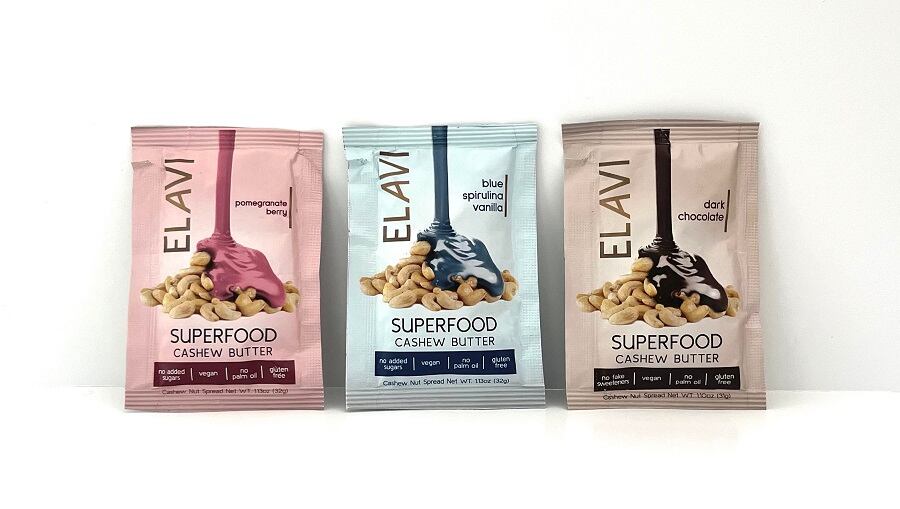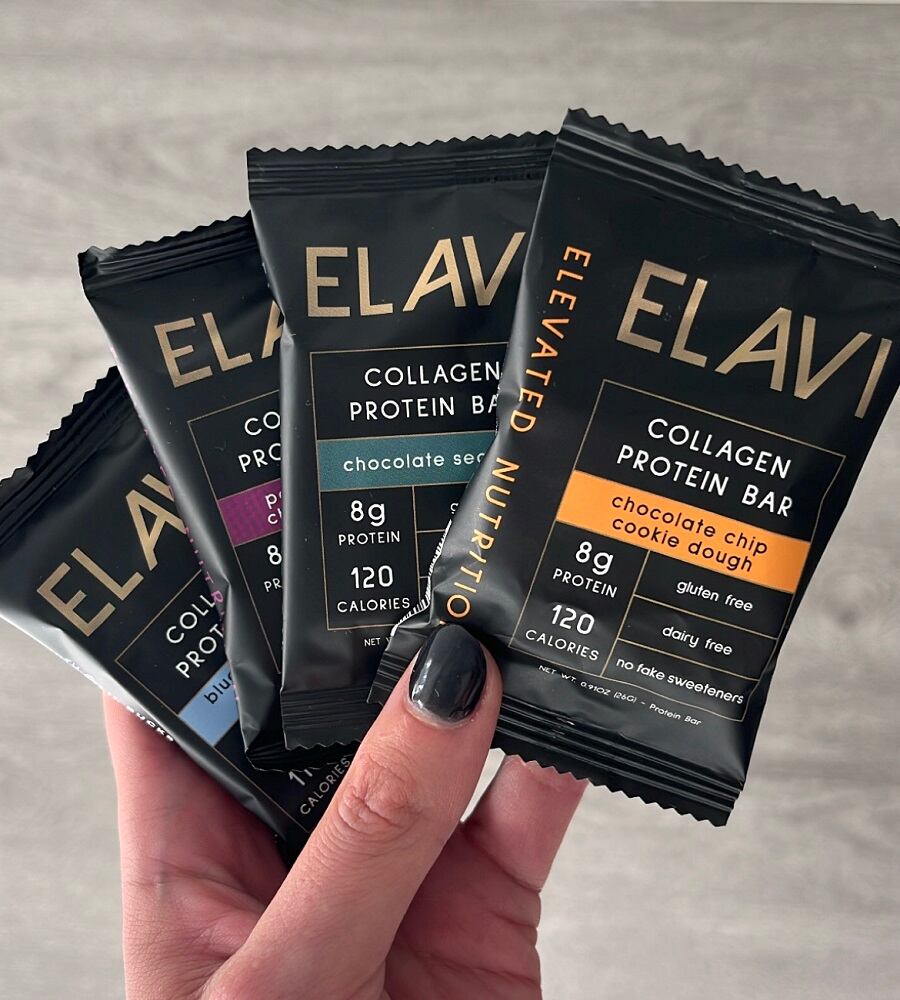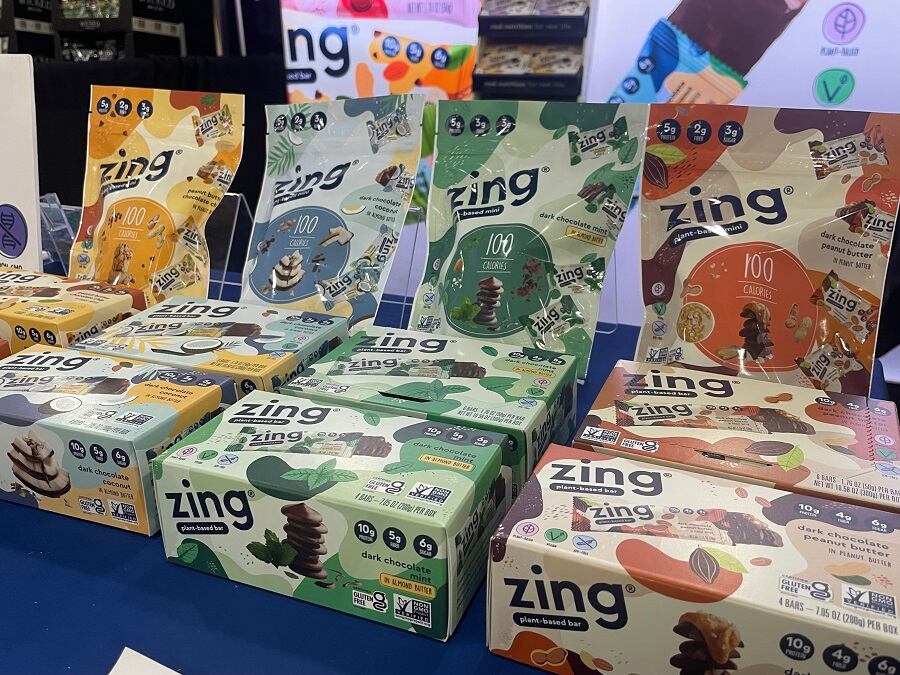“We had these chaotic days teaching…and working full time jobs and we struggled to properly fuel ourselves from a nutrition standpoint. [We were] constantly living out of our bags, relying on protein snacks, anything shelf stable,” Razavi explained to FoodNavigator-USA.
When building a snack bar brand in a concentrated market, the co-founders leveraged their corporate experience in finance, marketing and wellness to develop an overarching theme—gut friendly snacks—that would continue to shape ELAVI's indulgent line with the launch of its cashew butters made from monk fruit and dates.
“We have our performance line, which are the collagen protein bars [which] makes sense that as fitness trainers we would have a protein bar segment of our business.”
With an estimated market value of $47.17 billion by 2030, the snack bar market continues to evolve around multifunctional attributes like nutrition, satiation and gut-health, among others; as well as serving more health-conscious, on-the-go consumers who are looking for quick meal items. Coupled with the $1.5 trillion wellness industry, the intersection between snacks and wellness is an opportunity for brands to develop products surrounding both mental and physical health.
“For any brand, the power of storytelling is integral”
Initially, the brand started out selling the bars online direct to consumers. Through social media, Razavi and Elliott connected with their audience by hosting virtual work outs and sharing their personal stories surrounding fitness, health and nutrition.
“For any brand, the power of storytelling is integral. From day one, I knew that we had to put ourselves in front of the company. That’s what really helps us stand out in this competitive space. Social media doesn’t come naturally to a lot of bigger companies in terms of the founders going in…You’re putting your name, your reputation, your personal brand on the line and that’s scary for a lot of brands. So that fact that I was willing to do that from day one really set us apart,” she opined.

By building a community online, the duo was able to receive critical feedback from consumers which helped them build a stronger product—whether it was packaging, formulation or branding.
The co-founders’ personal narrative and continuous online engagement with audiences eventually helped them leverage their social media and sales metrics to an investor. But initially, the co-founders pooled their savings to start the business.
“So we saw our first four production wins together with no outside capital, no friends and family, no loans. It was just personal savings. We would drop off product at people who lived in San Francisco to save money on shipping—just any dollar we could save because you used that dollar just to produce product,” she explained.
Establishing purpose-driven values and growth strategies
Razavi met the brand’s investor through the virtual community hub, Clubhouse, where she initially signed up to learn how to fundraise. She shared that while every brand’s path towards growth is different, brands can always benefit from establishing purpose-driven values and growth strategies to help build investor relationships and capital.
Razavi explained that investors want to know a founder’s connection to their product—“gone are the days when you just create a product just to do it. There has to be some conviction that people can latch on to.”
“We still take this approach of focusing on one channel first”
ELAVI's growth strategy was simple and determined by where they can maintain the highest margin. “Where can we make the biggest impact for as little cost as possible?” she emphasized.
Razavi explained that a focus on high margins informed their concentrated efforts towards direct to consumer, which later evolved into their presence in Amazon, Erewhon, Equinox cafes, offices, and other specialty grocery stores.
“It’s where can we get the most bang for our buck. And we still apply that. As we continue to grow and as we continue to evolve our strategy, we still take this approach of focusing on one channel first,” she said.
Simplifying the channel will help brands adjust more quickly from mistakes and challenges.
“We rebranded multiple times, resized our products, our packaging, and fortunately were able to do that in the safety of DTC because you can own that messaging with your customer one to one. You don’t have to worry about Amazon reviews and you don’t have to worry about a retailer cutting you out. You get that faster feedback cycle,” she explained.
The expansion from DTC into retail was also met with growing pains, Razavi added. “At Erewhon, we made a lot mistakes. We thought our merchandising solution would be one way, and once we were on the shelves, we [knew] it wasn’t working. Fortunately, more boutique channels are more forgiving with smaller brands and so they’re filling to work with you.”
Razavi and Elliott relied on feedback from partners and consumers in-store who helped them determine price points, packaging and placement. “Try to go to your local neighborhood grocery store where you can check in on the inventory, meet the manager and buyer themselves and where you can talk to customers and ask them…what caught [their] eye,” she said.
If possible, she encourages brands to sample product in-store to employees. “Sampling is very grassroots, but that information is so valuable because you can take that, share with other stores and replicate it to build a tested, viable product.”
The snack bar discussion continues
FoodNavigator-USA will host a free snack bar webinar, Raising the Snack Bar: Exploring Growth Drivers, Innovations and Consumer Cravings, on July 26 at 11:30 AM CT.
From high-fat, moderate protein, ultra-low carb bars targeting keto fans, to the next generation of refrigerated bars, the snack bar panel will explore what’s happening in the snack bar space, which functional ingredients are trending, what consumers are looking for on the Nutrition Facts panel and ingredients list, and category differentiation in a saturated market.
Our expert panel includes:
- Sarah Philips, vice president, Emil Capital Partners
- John Olsen, brand marketing director, KIND Bar
- Julia Shapiro, VP brand and content, ALOHA
- Scott Dicker, market insights director, SPINS
- Deniz Ataman, deputy editor, FoodNavigator-USA
To register, please follow this link: https://www.foodnavigator-usa.com/Events/Raising-the-Snack-Bar-Exploring-Growth-Drivers-Innovations-and-Consumer-Cravings


